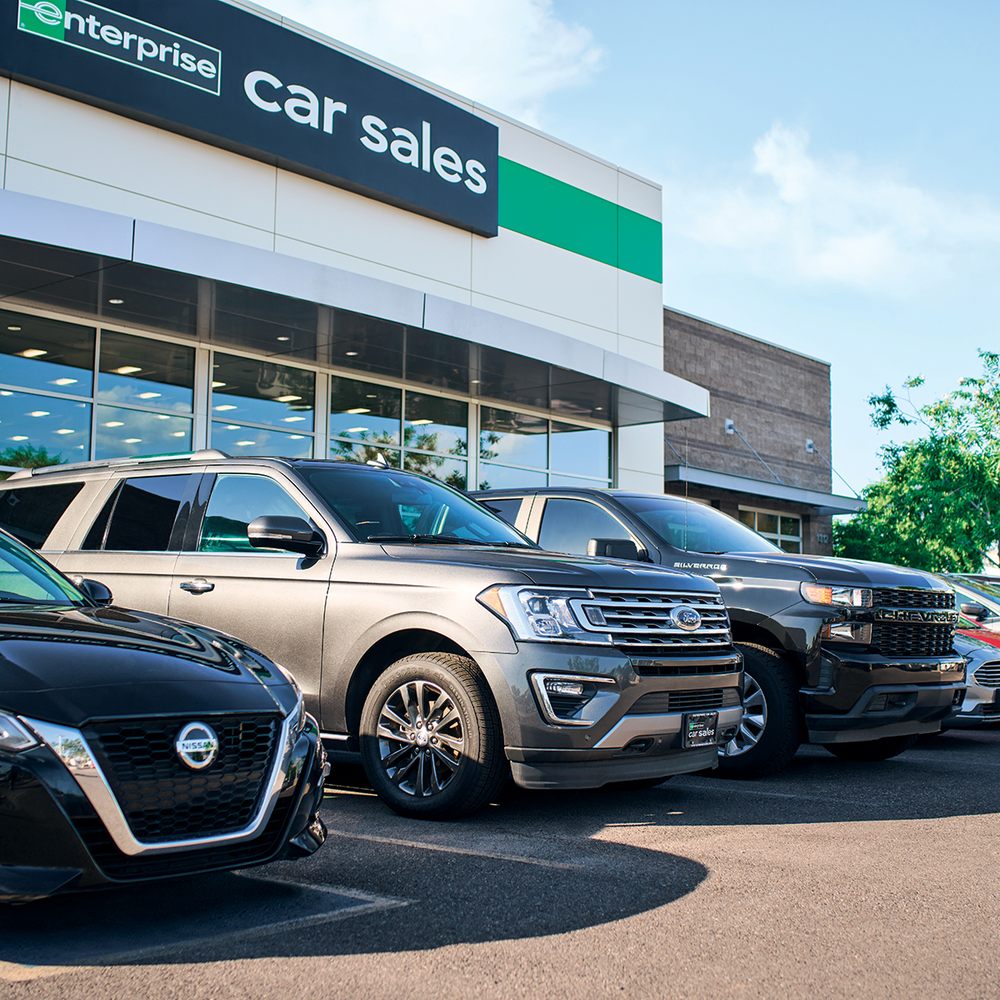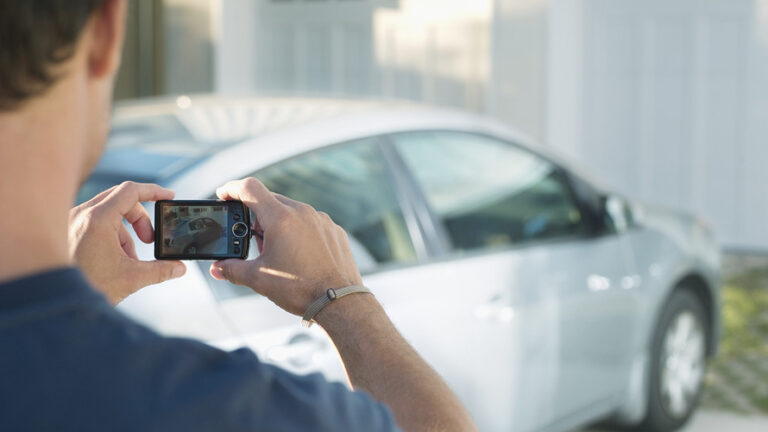Selling your car doesn’t have to be stressful. Whether you’re trading in, selling to a dealership, or posting a private listing, knowing the right steps will help you save time and maximize your return. In this guide, we’ll walk you through the entire process in just eight steps.

1. Gather the Necessary Documents
Before you even list your car, collect the essential paperwork. Being prepared will make the sale smoother and help avoid legal or administrative issues.
What to have ready:
- Vehicle Identification Number (VIN)
- License plate number
- Make, model, year, and mileage
- Loan/lien details (if any)
Required documents may include:
- Valid vehicle registration
- Title or proof of ownership
- Photo ID (matching the title)
- Loan payoff letter (if financed)
- Bill of sale (recommended, even if not required by state)
Optional documents to boost buyer confidence:
- Service records
- Vehicle manual
- Warranty documents
- Inspection report
- CARFAX or vehicle history report
2. Determine Your Car’s Value
Knowing your car’s worth ensures you don’t undersell it.

Use websites like Kelley Blue Book (KBB), Edmunds, or CARFAX to get a general estimate. Be honest about your car’s condition to get an accurate range.
Factors that affect value:
- Age and mileage
- Accident history
- Cosmetic condition
- Maintenance records
- Local demand for that model
Tip: Private party sales usually bring more money than trade-ins or dealer sales.
3. Prepare Your Car for Sale
A clean, well-maintained car always sells faster—and for more.
Steps to get your car sale-ready:
- Wash and wax the exterior
- Vacuum the interior, especially carpets and seats
- Wipe down surfaces and remove odors
- Remove personal belongings
- Fix minor cosmetic damage (small scratches or broken lights)
Repairs?
- For dealership sales: Skip costly repairs; dealers usually recondition cars themselves.
- For private sales: Fixing minor issues (e.g., replacing worn tires or fixing the AC) may be worth the investment to fetch a higher price.
4. Choose How to Sell Your Car
You’ve got three main options, each with pros and cons.

A. Private Sale
You sell directly to another person—no dealership involved. This method often nets the highest sale price, but it also requires the most effort.
Pros:
- Higher sale price
- Control over negotiation
Cons:
- Time-consuming
- Requires meeting buyers and handling paperwork
Best for: Sellers who want top dollar and don’t mind some extra work.
B. Online Car Dealerships
Companies like Carvana, Vroom, or Cars.com simplify the process.
Pros:
- Quick and easy
- Free pickup in many cases
- Instant offers
Cons:
- Offers may be lower than private sale
- No room to negotiate
Best for: Convenience and fast transactions.
C. Traditional Dealership
Selling to a local dealer is simple and ideal if you’re planning to trade in your vehicle.
Pros:
- Can apply value as a trade-in
- In-person negotiation possible
Cons:
- Lower price than private sale
- Can take hours at the dealership
Best for: Those looking to trade in for a new vehicle or avoid online logistics.
5. List Your Car
If you’re going the private sale route, your listing matters a lot.
Where to list:
- Facebook Marketplace
- Craigslist
- Autotrader
- OfferUp
Create a compelling listing:
- Include high-quality photos (front, rear, interior, odometer, engine)
- Mention the make, model, year, mileage, and condition
- Be honest about any issues
- Share why you’re selling
Tips:
- Set your asking price $500–$1,000 higher than your target price
- Avoid personal items or stickers in photos
- List during the day for better lighting
6. Handle Buyer Inquiries and Negotiations
Once listed, be ready for questions and offers. Be professional, polite, and firm on your price if it’s fair.

Tips to manage offers:
- Wait for multiple offers before accepting
- Prioritize in-person discussions over online haggling
- Be flexible but don’t undersell out of urgency
Always meet in public spaces, preferably during daylight, and never test-drive alone with a stranger—bring a friend or meet in a monitored area.
Get it in writing: A bill of sale is crucial, even if your state doesn’t require it. It protects both parties and serves as proof of the transaction.
7. Get Paid Safely
How you get paid depends on who’s buying your car.
Safe payment methods:
- Certified cashier’s check (from a bank)
- Cash, but count it in a safe place
- Bank transfers (only if verified in person)
Avoid:
- Wire transfers from strangers
- Payment apps (Venmo, PayPal) unless verified
- Personal checks unless you’re at a bank together
Selling a financed car?
- Contact your lender for the exact payoff amount
- Either:
- Pay off the loan first and then sell the car, or
- Have the buyer pay the lender directly (some banks facilitate this)
Once the loan is paid off, the lender will release the title, allowing you to sign it over to the buyer.
8. Finalize the Paperwork
To legally transfer ownership and protect yourself from liability, complete the final steps carefully.
For all types of sales:
- Sign over the title
- Provide a signed bill of sale
- Remove your license plates (in many states)
- Cancel your car insurance once the transfer is official
Extra steps for private sales:
- Submit a Notice of Transfer or Release of Liability with your DMV
- Notify your lender if the car was financed
- Double-check your state’s requirements for title transfer and smog/emissions checks
Summary: Which Selling Method Is Best for You?
|
Selling Option |
Best For |
Pros |
Cons |
|
Private Sale |
Maximum profit |
Higher price, flexible terms |
More time, more risk |
|
Online Dealership |
Speed and convenience |
Easy process, fast cash |
Lower offers, no negotiation |
|
Traditional Dealer |
Trade-in or buying a new car |
Instant trade-in value, simple |
May take longer, lower sale price |
Our Top Picks for Selling Your Car Online
Vroom – Simplest Process
Vroom’s step-by-step form gives you a solid quote within minutes. If you accept, they’ll come pick up your car and pay you quickly.
Carvana – Most Trusted Dealer
Carvana earns praise for customer service, smooth transactions, and fast payments. It also has a massive network, making it easy to coordinate a sale from almost anywhere.
Final Thoughts
Selling your car doesn’t have to be complicated. Whether you’re maximizing profit with a private sale or opting for a hassle-free online dealer, following the right steps makes all the difference.

Just remember:
- Stay organized
- Be honest about your car’s condition
- Use safe payment methods
- Don’t skip paperwork
By following this 8-step guide, you’ll be better prepared and more confident throughout the process—helping you secure the best deal possible.






Hi, this is a comment.
To get started with moderating, editing, and deleting comments, please visit the Comments screen in the dashboard.
Commenter avatars come from Gravatar.